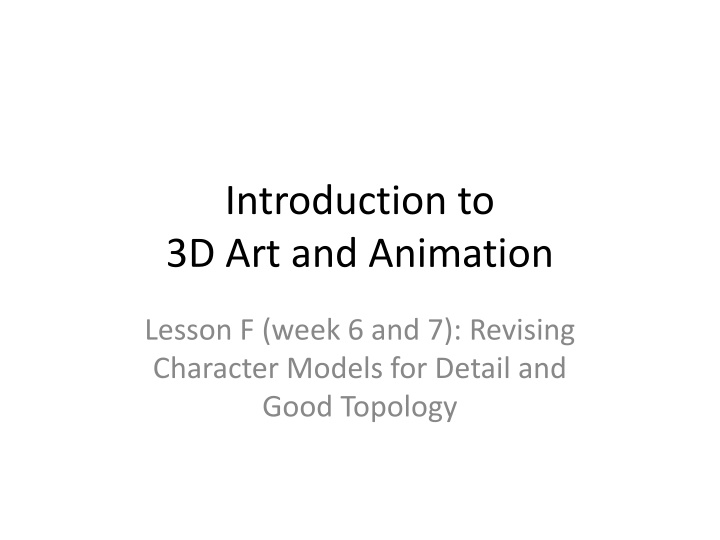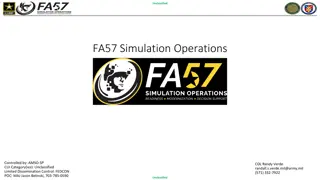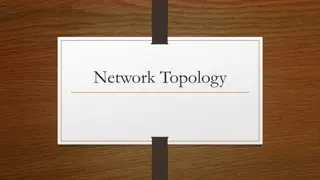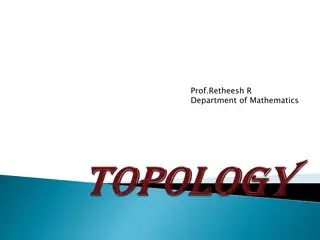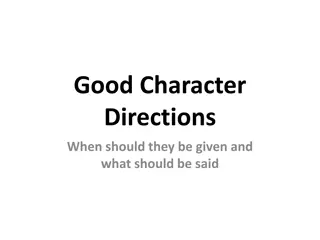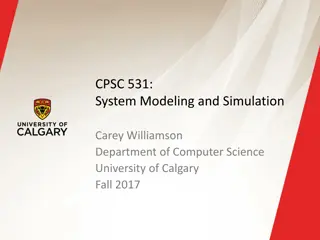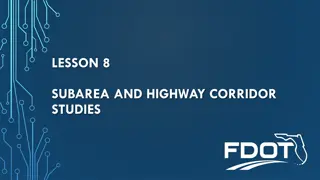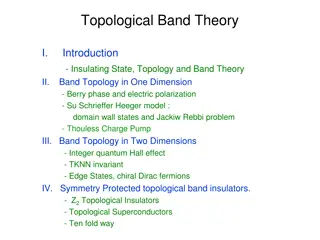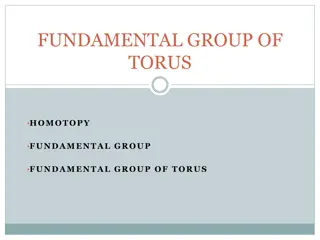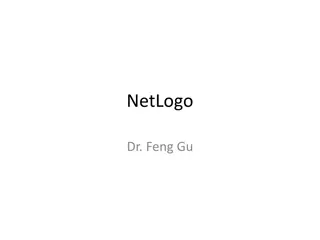3D Character Modeling: Refining Detail and Topology
Enhance your character models by adding intricate details and optimizing topology for better animation and rendering. Learn organic modeling techniques for creating realistic features like eyes, hair, clothing, and joints. Explore key considerations for achieving smooth edge loops, even tessellation, and clean quad shapes. Refine your skills with practical revision notes and polygon clean-up tricks to elevate your 3D art and animation projects.
Download Presentation

Please find below an Image/Link to download the presentation.
The content on the website is provided AS IS for your information and personal use only. It may not be sold, licensed, or shared on other websites without obtaining consent from the author.If you encounter any issues during the download, it is possible that the publisher has removed the file from their server.
You are allowed to download the files provided on this website for personal or commercial use, subject to the condition that they are used lawfully. All files are the property of their respective owners.
The content on the website is provided AS IS for your information and personal use only. It may not be sold, licensed, or shared on other websites without obtaining consent from the author.
E N D
Presentation Transcript
Introduction to 3D Art and Animation Lesson F (week 6 and 7): Revising Character Models for Detail and Good Topology
Organic Modeling: Revision Notes 1 Revising Your Model: Once you have the rough overall form, save a copy and add detail. See the breakdown of each of these tasks in later slides: 1. The face needs eyelids/brows, nostrils, and geometry to round out the form. Extrude a pocket from the mouth interior and make eyes, teeth, and tongue separate objects. 2. Hair is usually made from a separated duplicate of the scalp mesh, which is Extruded out (and then Extruded down again from the bottom, if the hair is meant to be long). Then MultiCut details for larger hair forms (think of hair like sculpting mashed potatos). 3. Clothing needs breaks (where one item bulges/overflows over another, like a tucked shirt over pants or pant cuffs over shoes), big folds, and seams. 4. Chest-arms-fingers typically get a new horizontal line across them all, resulting in 8- sided arms and 6-sided fingers. 5. The fingers need detailed joints and the elbows and knees need more divisions to make smooth deformation in those areas. 6. Big clothing details like collars, belts, pockets, etc. need to be cut and extruded. 7. Chest and back get at least one new vertical line, up from the undercarriage, to round out the form. Usually, we want a few more to come up the legs and bottom/top of the arms.
Organic Modeling: Revision Notes 2 REMEMBER: Every detail needs at least TWO LINES, with one pulled out, for the detail to be visible. Consider a shirt sleeve, which needs a loop for the edge of the cloth end and a smaller loop for where skin emerges out from under it. You may want that transition from cloth to skin to be visible even after you hit [3] for Display-Smoothing. To do so, this pair of key form-lines each needs to have a very nearby-twin to create a hard edge in the Display-Smoothing, and not appear melted. MIROR: When revising, it is often helpful to have an instance mirror of your half- mesh to check your dimensions. The character should be standing at the world center in the Front and Side viewports (you can also move the Image Plane so they still line up). The pivot should be at 0/0/0. Edit > Duplicate Special, choose Instance and set the first Scale value (X) = -1. Hit [Apply].
Organic Modeling: Revision Notes 3 Three main considerations for good Organic Surface Topology: 1. SMOOTH EDGE LOOPS: For good animation deformation, cut curves around the form to imitate muscle groups, like the ovals around eyes and mouth, and circles down limbs. 2. EVEN TESSELLATION: Keep relatively even-spacing between loops, especially on limbs and torso. Joints and face will have higher tessellation-- denser line spacing. 3. QUADS: Keep all shapes 4-sided. More than 4 sides is bad for animation and rendering, as Maya will decide randomly where to put invisible edges. Tris/3-sides are OK in a pinch, but quads permit quick selection tools and get better joint deformation.
Organic Modeling: Revision Notes 4 Organic Polygon Clean-Up Tricks: TURN TO CENTER: The face will have a higher density than the torso. Rather than populate an edge loop down the entire form, MultiCut turns from neck to the center. BREAK A CORNER: If an Edge Loop needs to make a turn through a quad, MultiCut a line to the opposite corner to make that quad into 3 quads. DOUBLE TRIANGLE: 2 tris touching at 1 point can easily become 2 quads: MultiCut across 1 adjacent side between them, select the new edge and Edit Mesh > Collapse the new line.
Organic Modeling: Revisions Revising Your Model: Add details (in no particular order): FACE 1. The face needs eyelids/brows, nostrils, and geometry to round out the form. Extrude a pocket from the mouth interior and make eyes, teeth, and tongue separate objects.
Organic Modeling: Revisions Revising Your Model: Add details (in no particular order): HAIR 2. Hair is usually made from a separated duplicate of the scalp mesh, which is Extruded out (and then Extruded down again from the bottom, if the hair is meant to be long). Then MultiCut details for larger hair forms (think of hair like sculpting mashed potatoes).
Organic Modeling: Revisions Revising Your Model: Add details (in no particular order): CLOTHING DRAPE AND FOLD 3. Clothing needs breaks (where one item bulges/overflows over another, like a tucked shirt over pants or pant cuffs over shoes), big folds, and seams.
Organic Modeling: Revisions Revising Your Model: Add details (in no particular order): CONNECT LINE CHEST-TO-FINGER 4. Chest-arms-fingers typically get a new horizontal line across them all, resulting in 8-sided arms and 6-sided fingers.
Organic Modeling: Revisions Revising Your Model: Add details (in no particular order): FINGER DETAILS: 5. The fingers need detailed joints and the elbows and knees need more divisions to make smooth deformation in those areas.
Organic Modeling: Revisions Revising Your Model: Add details (in no particular order): CLOTHING FORMS: 6. Big clothing details like collars, belts, pockets, etc. need to be cut and extruded.
Organic Modeling: Revisions Revising Your Model: Add details (in no particular order): CHEST AND BACK VERTICAL LINES 7. Chest and back get at least one new vertical line, up from the undercarriage, to round out the form. Usually, we want a few more to come up the legs and bottom/top of the arms.
Delete History and Saving As with all Maya modeling, please DELETE YOUR HISTORY every hour or two, and certainly before you save and close for the day to upload your work. To guard against crashes and loss of work, please Save and Save As a new file every hour (so you can never lose more than an hour s work): YourName_Character01.mb, YourName_Character02.mb, etc. Save your work to an online repository every day (Dropbox.com, Google drive) so you have a backup in case your computer fails.
